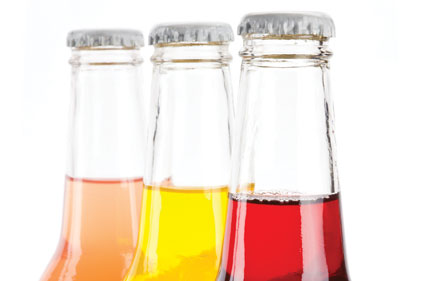Beverages are carbonated when they are placed under high pressure and injected with carbon dioxide. Beverages like spring water, soda and beer are put under carbonation to provide a tactile sensation on the tongue and spread out the flavors from the beverage across the tongue. Though carbonation may be important for delivering flavor, specifically in beer, Bruce Byant, PhD, a sensory biologist at Monell and his team now say it does nothing for the beverage’s bite.
When a can of soda or beer is opened, the carbon dioxide locked inside is released into their air. These beverages do not go “flat” immediately upon opening, of course, but Byant believes the fact this gas is released means it might not be behind the bite. Instead, he found enzymes in the mouth responsible for converting the remaining carbon dioxide into carbonic acid are the source of the sensation. When this carbonic acid meets the nerve endings on the tongue, it irritates them, thus creating what we call "bite."
To test this hypothesis, Byant placed test subjects in an environment where bubbles cannot exist: A hyperbaric chamber.
Hyperbaric chambers artificially raise atmospheric levels high enough so that bubble’s cannot form. Some 12 healthy adults at normal atmospheric levels were asked to take sips from several different carbonated beverages, each with varying levels of carbonation concentration. Each beverage was rated by the intensity of its bite. The same adults were then placed in the hyperbaric chamber and asked to rate the same beverages. The atmospheric pressure in the chamber, says Byant, was equivalent to diving 33 feet below sea level. After tasting the same beverages at different pressure levels, the participants were unable to detect a difference in bite, even though bubbles cannot form when in the chamber.
“Because the subjects experienced the same bite when bubbles weren’t present, the findings clearly told us that carbonation bite is an acidic chemical sensation rather than a purely physical, tactile one,” said Byant in a statement.
Just because the bubbles are not necessary does not mean they do not play a role in the beverage, of course. In a second test, Byant asked 11 more participants to rate the intensity of carbonated beverages under normal conditions and again when additional air bubbles were added. The participants rated the beverages with extra bubbles higher than the other beverages, leading the researchers to believe the extra carbonation enhances the carbonic acid reaction on the tongue.
“We thought the touch of the bubbles would suppress the painful aspects of carbonation, much as itching a mosquito bite or rubbing a sore muscle does,” said Byant.
